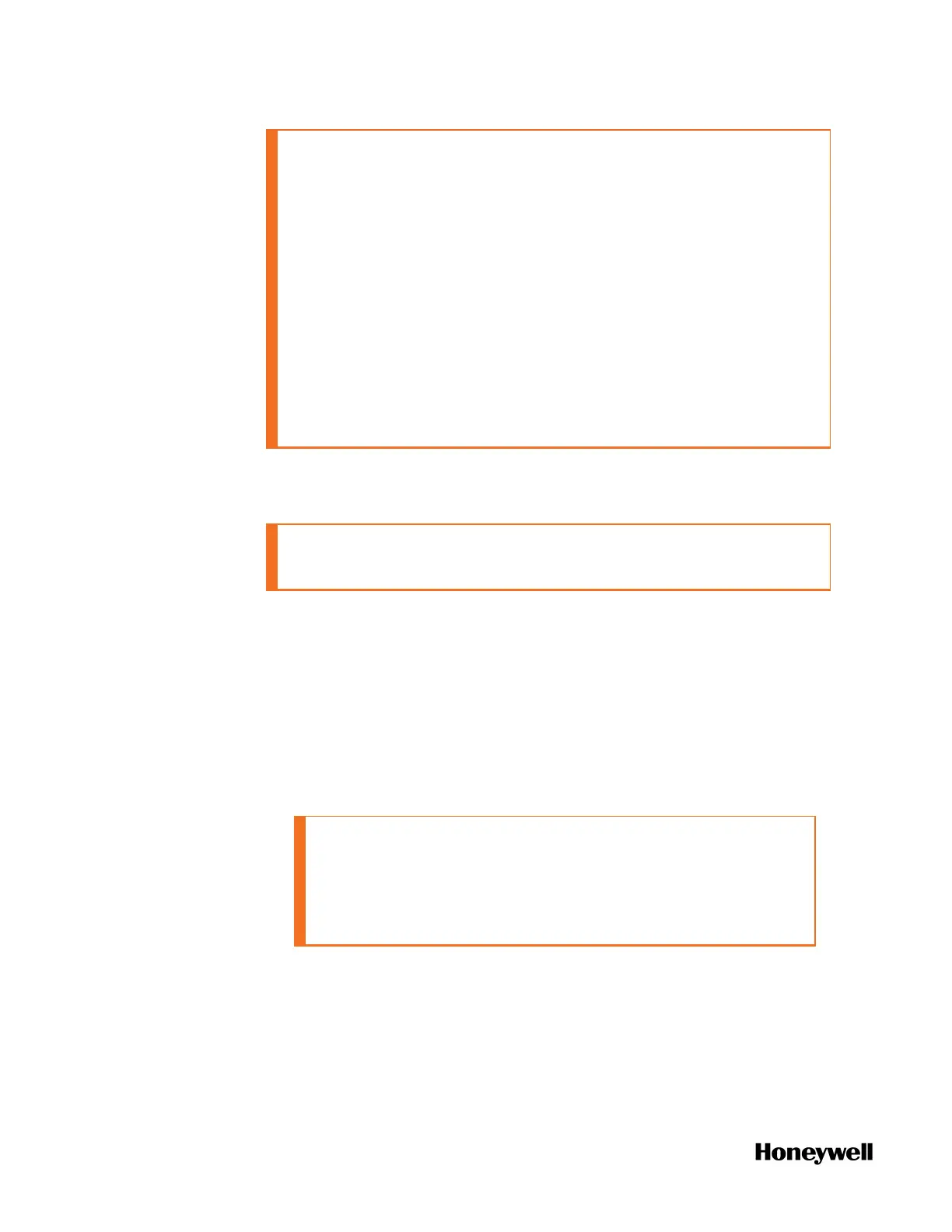but if operating circumstances permit, disconnecting power from
the rack is the preferred option. Plan and develop an action
sequence before beginning the replacement procedure. Primary
considerations include:
When replacing I/O module, the voltages to the modules must be
disconnected at the field device before removing the terminal
block from the module.
Loss of control/monitoring in a running process - Each signal at
each of the terminals for an I/O module has a specific function.
Any or all of the signals may be vital for safely controlling a
process. Determine the functions of all signals to the modules
and know the potential consequences of losing each. If possible,
transfer control to alternate mechanisms; otherwise, bring the
process to a safe and controlled shutdown.
You will need a #2 Philips screwdriver.
To replace an I/O module:
CAUTION: Explosion hazard. Removal and Insertion Under Power
is not supported in Division 2/ Zone 2.
1. Disconnect all signals from power sources. Use a meter to ensure
that all voltages are disconnected.
2. If a power-down replacement procedure is opted, also disconnect
power from the rack, using the (user-supplied) switch in the
source main power.
3. Loosen the captive screws at top and bottom of the module;
loosening the screws will cause the terminal block to be partly
extracted from the module connector. Remove the terminal block
from the module.
CAUTION: The UIO module will continue to drive the
configured failsafe output if the UIO module is removed
along with the terminal block with the field power not de-
energized. So it is recommended to de-energize field power
before UIO module removal.
4. Using the extractor loop on the cover of the module, pull the
module from the slot with a long flat-tip screwdriver an extraction
lever. as shown in the following illustration.
162

